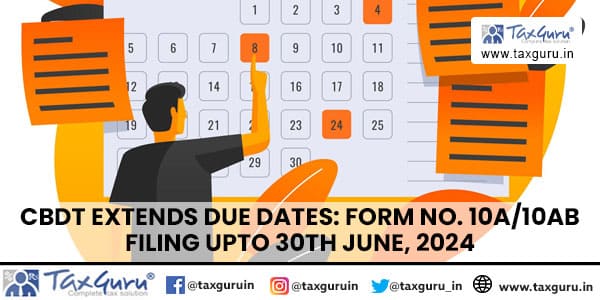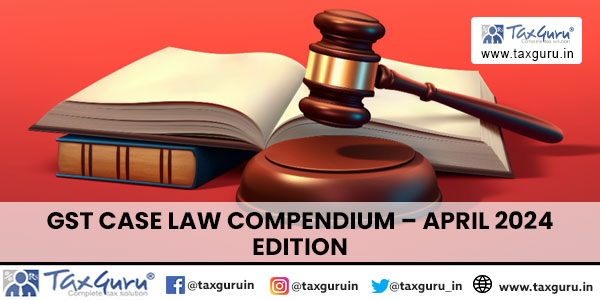INTRODUCTION
The government of India through the Finance Act, 2019 bought 360-degree change under the Indian Stamp Act, 1899(hereinafter called as Stamp Act).
Though there are numerous reasons for amending Stamp Act, some of the reasons are very explicit and some of them are not. However, no one can deny the fact that Stamp Act was waiting for such amendment from quite some time due to its archaic nature especially when we see it in the light of technological changes through which financial market went through in last one (1) decade. Apart from these technological reasons other reasons are legal and administrative such as multiple rates for stamp duty on a similar transaction, jurisdictional disputes, multiple incidences of duty, all this increasing the transaction cost and creating blocked in the development of well-structured securities market and impeding the capital formation.
It is to be noted that issue or transfer of securities was historically subject to the stamp duty, it was only after the introduction of Depositories Act, 1996 and subsequent dematerialization of the securities (especially shares and debentures) that government to promote the transactions in the de-materialized form introduced the Section 8A and exempted the de-materialized the securities from the payment of the stamp duty.
Since now the government has mandated all the public company to facilitate the dematerialization of their securities through inserting new rule 9A in The Companies (Prospectus and Allotment of Securities) Rules, 2014. So keeping dematerialized shares out of the ambit of duty will cause revenue loss to the various state governments.
Due to all this, technological and legal changes in the securities market government was under the obligation to amend the Stamp Act, and provide the legal and institutional mechanism to enable States to collect stamp duty on securities market instruments at one place by one agency (through the Stock Exchanges or Clearing Corporations authorised by the Stock Exchange or by the Depositories) on one instrument.
Through these amendments, the government has achieved the above-desired objective and also able to position itself that the government is committed to promoting ease of doing business, creating pan India securities market, and reducing the cost of collecting the duty but increasing the revenue productivity of the government.
The Amended Indian Stamp Act, 1899 along with rule The Indian Stamp (Collection of Stamp Duty through Stock Exchanges, Clearing Corporations and Depositories) Rule, 2019 along with amendment (Amended Rule) come into force from 1st July, 2020.
Further, on the very onset of the write-up, I like to clarify that this write-up only deals with shares and debentures. However, the new amendments deals with the securities and debenture and definition of the securities under the Stamp Act is very wide and include securities as defined Securities Contracts (Regulation) Act, 1956, Derivatives, certificate of deposit, commercial bill etc.
CONSTITUTIONAL BACKGROUND
Before moving further with the Stamp Act and its amendments, I like to discuss about the constitutional background of the Stamp Act.
The Articles of the Constitution that deals with the Stamp Act are Article 246 along with Seventh Schedule and Article 268.
Article 246 along with Seventh Schedule deals with the distribution of power between Centre and State. List- I, Union List, provides the matters on which Centre Government has absolute power to make any laws. List-II, State List enumerates the matter on which the State Government has the absolute power to make any laws. List-III, Concurrent List, in respect of the matter enumerated in this list both Centre and State Government has the power to make laws.
In List-I, Union List, entry no. 91, provides that “Rates of stamp duty in respect of bills of exchange, cheques, promissory notes, bills of lading, letters of credit, policies of insurance, transfer of shares, debentures, proxies and receipts.” So it is clear that the centre government has the power to decide the rate of the stamp duty in respect of shares and debentures.
Further, Article 268, provides that such stamp duty as mentioned in the List-I, Union List, (Example, Entry No. 91, Stamp Duty on Bill of Exchange, Shares etc.) shall be levied by the Government of India, and collected by;
1. In case of Union Territory, by the Government of India, and
2. In case of any state, by the respective state government.
Why we pay stamp duty/ Charging Section
As per Section 3 of the Indian Stamp Act, 1899, every instrument specified in the Schedule-1 subject to other provision of the Act, shall be chargeable to stamp duty subject to following conditions.
1. Every Instrument executed in India after the year 1899.
2. Bill of Exchange (other than those payable on demand) and Promissory Note drawn or made out of India and accepted or paid, presented for acceptance or payment, or endorsed, transferred or otherwise negotiated in India.
3. Every instrument other than Bill of Exchange and Promissory Note mentioned in the schedule is executed out of India relates to any property situated or to any matter or thing is done or to be done in India and is received in India.
Provided that no duty shall be chargeable in respect of-
1. Any instrument executed by, or on behalf of, or in favour of, the Government in cases where, but for this exemption, the Government would be liable to pay the duty chargeable in respect of such instrument;
2. Another exemption is related to the Merchant Shipping Act, 1894, since it is not concerning our current context so I am not going into its details.
When we read Section 3, it is evidently clear that stamp duty is not payable on the transaction rather on the instrument we use to execute such transaction. So now question arise what is the instrument and whether share certificate or share transfer deed and allied documents are instruments.
As per Section 2(14) of the Stamp Act, amended by Finance Act, 2019, instrument includes (definition is inclusive one rather than exhaustive) every document, by which rights or liabilities are created, extinguished, transferred, extended or limited, or purports to be created, extinguished or transferred. Any documented, electronic or physical achieving before-mentioned objective in the stock exchange or depository. Any other documents as mentioned in the Schedule-I.
So it is clear that shares and debentures or any allied document used for issuing, transferring etc., are the instrument and chargeable to Stamp Duty/Duty. Moreover, these documents are also mentioned in the Schedule-I, Debenture vide Entry No. 27 and Securities (Shares) vide Entry No. 56A.
INCIDENCE OF STAMP DUTY
Shares and debentures are in either physical form or dematerialized form. As per Companies Act, 2013 and rules made thereunder all Public Company need to obtain ISIN for their securities and also need to facilitate their securities holder to have such security in dematerialized form. However, no such obligation for Private Companies
Provisions of the Stamp Act, 1899 that deals with the shares and debentures are Section-4 Section 8A, Section 9A, Section 9B, Section 21, Section 29, and Section 62A along with Schedule-1 and The Indian Stamp (Collection of Stamp Duty through Stock Exchange, Clearing Corporation and Depositories) Rules, 2019.
Since Section 4 precedes all the section so I am starting with Section 4. This particular section enumerates about “Principal Document” and payment of stamp duty on such a document. It is very common that to complete the single transaction we execute series of documents, for example, to purchase the flat in NOIDA one need to execute Agreement to Sale, Sale deed and transfer memorandum, so the question arises on which documents stamp duty needs to be paid or all the documents are subject stamp duty.
Section 4 provides that, parties to the contract have the liberty (with few exceptions) to choose one document as the principal document in case single transaction involving multiple documents and stamp duty shall be levied only on such principal document and all the other document will be stamped with an amount equal to Re. 1 (one).
However, stamp duty to be paid on the principal document shall be highest of the stamp duty attracted by any of the document in the single transaction. For example, if any single transaction involves three documents, Document A, Document B and Document C, attract stamp duty equal to Rest. 10, Rest. 15, and Rest, 20 respectively. The parties to the contract have the liberty to choose any one of the documents as the principal document, for example, they choose Document B as the principal document, and however, Stamp Duty shall be paid equal to Rs. 20 that is highest of all.
Further, new sub-section (3) has been inserted through Finance Act, 2019. As per newly inserted sub-section, in case of an issue, sale and transfer of securities the parties to the transaction don’t have the liberty to select the principal document, rather, the instrument on which stamp duty is paid as per Section 9A shall be considered as principal document and no stamp duty (nor of Re. 1) to be paid on any other documents associated with the same transaction.
Further, for ease of writing and understanding, I will conceptually bisect the stamp duty on shares and debentures and its legal provision into two parts, one that deals with Dematerialized shares and debentures and other that deals with physical shares and debentures.
DUTY TO BE PAID ON DEMATERIALIZED SHARES AND DEBENTURES
Two sections deal with duty to be paid on dematerialized shares and debentures are; Section 8A, amended by Finance Act, 2019, and Section 9A, inserted by Finance Act, 2019.
Section 8A provides the basic framework for duty to be paid on dematerialized shares and debentures, it is to be noted that before amendments bought by Finance Act, 2019, and this section exempted the payment of duty in case of dematerialized shares.
The section after amendment provides the following;
1. Issuer issuing shares and debentures through depository shall be liable to pay duty on such newly issued shares and debentures.
2. Such shares and debentures need not need to be stamped i.e. adhesive and impressed, however, duty is payable.
3. Dematerialization and Rematerialization of existing shares and debentures will not attract any duty.
Newly inserted section, Section 9A, provides the details foreground of the procedural niceties of the duty to be paid in respect of dematerialized shares and debentures. The section comprises of five (5) sub-sections each dealing with separate issues.
Before moving further, I like to re-produce the definition of the different terms used in the Section for better understanding.
1. Delivery Based or otherwise; whether the transaction is delivery based or not to be decided by the clearing corporation on settled principal. In general, when shares or debentures are delivery based or not is determined by the fact whether shares or debentures are taken into the Demat account of the person bought the security or not.
2. “Allotment list” means a list containing details of allotment of the securities intimated by the issuer to the depository under subsection (2) of section 8 of the Depositories, Act, 1996;
3. “Clearance list” means a list of transactions of sale and purchase relating to contracts traded on the stock exchanges submitted to a clearing corporation in accordance with the law for the time being in force in this behalf;
4. “market value”, in relation to an instrument through which—
(a) any security is traded in a stock exchange, means the price at which it is so traded;
(b) any security which is transferred through a depository but not traded in the stock exchange, means the price or the consideration mentioned in such instrument;
(c) any security is dealt otherwise than in the stock exchange or depository, means the price or consideration mentioned in such instrument;
1. “Collecting agent” means a stock exchange or clearing corporation authorised by it or a depository which is empowered to collect stamp-duty on securities on behalf of the State Government in accordance with the provisions of the Act and these rules;
2. “settlement day” means the day on which, –
(i) a transaction is settled by a stock exchange or an authorised clearing corporation, by completing the delivery of funds to the seller and delivery of underlying securities corresponding to those funds to the buyer; or
(ii) it is reported to a stock exchange or a clearing corporation specifying that the transaction in securities has been carried out provided the security is not held in dematerialised form with any of the depositories; or
(iii) an issue or transfer has been effected in a depository in respect of securities held in a dematerialised form which may have to be later reported to the stock exchange or a clearing corporation.
g “domicile State” means: –
(i) the State of the buyer as it appears in the “permanent address” in India on the settlement day, and in case the same is not available, as it appears in the “correspondence address” in India, as per the records of stock exchange or clearing corporation or depository ;
or
(ii) in case the State of the buyer is not available in the “permanent address” or “correspondence address” in India, the State having the registered office of the member, through whom the trade or transfer was executed, and in case the same is not available, the State having the registered office of the participant or custodian through whom the trade was effected.
Coming back to Section 9A, Section 9A sub-section (1) is divided into three parts,
1. First part deals with shares and debentures dealt through the stock exchange to be read with Rule 3 of the Indian Stamp (Collection of Stamp-Duty through Stock Exchanges, Clearing Corporations and Depositories) Rules, 2019 (hereinafter referred as Stamp Rule).
2. The second part deals with shares and debentures dealt through the depository to be read with rule 5 of the Stamp Rule,
3. The third part deals with the new issue of shares and debentures to read with rule 6 of the Stamp Rule.
Sale of Shares and Debentures through Stock Exchange
1. Sale of Shares and debentures through the stock exchange.
2. It can be delivery based or otherwise, however, both having a different rate of duty.
3. Duty to be paid on the clearance list (Principal Document).
4. No other documents will attract any duty.
5. Stock Exchange or Clearing Corporation authorized by it will collect the duty.
6. Duty will be paid on the market value of shares or debentures.
7. Buyer will pay the stamp duty.
8. In following cases if the transaction is routed through stock exchange offer or will pay the duty after completion of the offer*;
9. Tender offer
10. Open offer
11. Offer for sale
12. Private Placement
- This point (h) comes from Rule 3 sub-rule 4 of the Indian Stamp Rule, 2019. However, sub-rule 4 is not clear, at as per my limited understanding whether the duty to be charged on offer price or market value.
1. Rate of Stamp Duty Shall be
2. For Debenture 0.0001%
3. Shares:
4. Delivery Based: 0.015%
5. Non-Delivery Based: 0.003%
SALE OF SHARES AND DEBENTURES THROUGH DEPOSITORY
Shares and debentures of a listed company may be sold through depository in case off-market sale purchase. Since in off-market sale-purchase, the transfer takes place out of stock exchange.
In the case of the unlisted public company also the transfer of shares and debentures will take place in depository mechanism due to insertion of the new rule under Companies Act, 2013 and rules made thereunder.
1. Transfer of shares and debentures for consideration (It is important to note that consideration cash or otherwise is important here to bring instrument within the ambit of duty).
2. Duty will be paid for both delivery or otherwise (obviously rate is different).
3. Depository to collect duty.
4. Duty to be paid by the transferor.
5. Duty to be collected on the value specified in the instrument (Delivery Instruction Slip), physical or electronic.
6. Duty to be collected before executing the transfer.
7. In the case where the transferor and transferee depository is different, then, transferee depository shall intimate within 1 day* about the domicile state of the transferee, so that transferor depository can transfer such amount to transferee’s state.
- Note that is not clear that One (1) day should be counted from which date.
8. in case payment is made in parts or instalment, the duty to be collected on the entire Market Value on the date of transfer.
9. In case transfer is due to the invocation of pledge etc., the duty to be paid on Market Value and to be collected from pledgee.
ISSUE OF SHARES AND DEBENTURES
The third part of Section 9A sub-section (1) deals with the issue of shares and debentures and consequential change in record or creation of new shares and debentures and duty to be paid on them.
This include, however not limited to, following transactions;
1. Issue of new shares
2. Further Issue of Shares
3. Private Placement
4. Tender Offer
5. Open Offer
6. Offer for sale.
1. Issuer shall be liable to pay duty on the market value of shares and debentures.
2. Allotment list will be principal document
3. Duty to be collected before executing the transaction.
4. In case of following corporate action duty will not be attracted subject to the condition that there should be no change in beneficial ownership;
5. Stock Split
6. Stock Consolidation
7. Merger & acquisition etc.
However, it is to be noted that fresh issue shall be subject to stamp duty. In case of fresh issue, the most interesting point comes when we analyse it in the context of Bonus issue. Since as per the proviso to sub-rule 3 of rule 6 of the Rule The Indian Stamp (Collection of Stamp Duty through Stock Exchanges, Clearing Corporations and Depositories) Rule, 2019 it is mentioned that that fresh issue will be subject to stamp duty, however, as per section 9A(1)(c), stamp duty in case of the fresh issue to be based on the market value, however, as section 2(16B), market value in case of security traded in the stock exchange is the price at which they are trading but for other types of Securities, it is the consideration mentioned in the instrument. Since in the case of Bonus Issue no consideration is paid so it will out of the ambit of stamp duty. Same find the positive consonance in the FAQs issued by the department of revenue and SEBI.
In the case where majority shareholders buy shares from the minority shareholders pursuant to Section 236 of the Companies Act, 2013, the incidence of payment of stamp duty will be on issuer not on the transferor.
In conclusion, I deduce following from Section 9A,
Collection: The stamp-duty on sale of securities, transfer of securities and issue of securities shall be collected on behalf of the State Government by the Stock Exchange or Clearing Corporation authorized or Depositories (authorized collecting agents). The Central Government has also notified the Clearing Corporation of India Limited (CCIL) and the Registrars to Issue and/or Share Transfer Agents to act as collecting agents.
DUTY IN CASE OF PHYSICAL SHARES AND DEBENTURES
On very starting of this provision I like to clarify that Section 9B does not provide anything related to physical shares and debentures rather it provides about the stamp duty payable on the instrument in case of transaction through other than Stock Exchange and Depository, so I am deducing that it provides about the stamp duty to be paid in case of physical shares and debentures.
If new shares and/or debentures are issued;
1. Issue of securities other than through stock exchange and depository.
2. Issuer will pay the stamp duty.
3. Stamp Duty to be paid to the state where registered office of the company is situated.
4. Stamp Duty to be paid on the market value of the shares and debentures.
5. Rate of Stamp Duty will be 0.005 % of the market value both for shares and debentures.
In case of sale, transfer or reissue;
1. It should be for consideration.
2. Seller, transferor, or issuer, as the case may be, shall be liable to pay stamp duty.
3. Stamp Duty to be paid on the consideration specified in the instrument (For example, SH-4)
4. Rate of Stamp Duty Shall be
5. for Debenture 0.0001%
6. Shares:
7. Delivery Based: 0.015%
8. Non-Delivery Based: 0.003%
The section 9B is applicable in case of Private Company where shares can be issued and transferred through mechanism other than Stock Exchange and Depository.
PRINCIPAL DOCUMENT, VALUE, INCIDENCE AND RATE OF DUTY
As discussed above, section 9A provides about the principal document and overall mechanism for the payment of duty in case where shares and debentures are listed and dematerialized form and transaction is executed through stock exchange and depository.
Though Section 9A also provides about the value on which duty to be charged, and who will be liable to pay duty, etc., however, these issues are also dealt separately under Section 21, the value on which duty to be charged, Section 29, the incidence of payment of duty, Schedule-I rate of duty.
As per Section 21, the duty to be paid on any instrument in respect of Shares and Debentures shall be calculated on the Market Value of Shares and Debentures.
Section 29, amended by the Finance Act, 2019, provides about liability to pay the duty, as per section the liability to pay duty will be on following persons depending on the nature of the transaction.
| TRANSACTION | MECHANISM | DUTY INCIDENCE | RATE OF DUTY |
| Sale of Shares and Debentures | Stock-Exchange | Buyer | Shares Delivery Based: 0.015% Non Delivery Based 0.003% Debenture: 0,0001% |
| Transfer of shares and debentures | Depository | Transferor | Shares Delivery Based: 0.015% Non Delivery Based 0.003% Debenture: 0,0001% |
| Transfer of shares and debentures | Other than Stock Exchange and Depository (In case of Private Company) | Transferor | Shares Delivery Based: 0.015% Non Delivery Based 0.003% Debenture: 0,0001% |
| Issue of shares and debentures | For all | Issuer | Shares 0.005% Debenture: 0.005% |
TRANSFER OF DUTY FROM COLLECTING AGENT TO STATE GOVERNMENT
As we have already discussed that onus to collect duty in case of dematerialized shares are with Stock Exchange, Clearing Corporation, Depository (collectively called as collecting agent), depending on the mechanism through which transaction is being executed.
Once the duty is collected, collecting agent is liable for transferring such duty along with interest earned on such duty, if any, to the respective state government.
The duty shall be transferred to the Domicile state of the buyer. If the buyer is located outside India then duty to be transferred to the state where the registered office of a trading member or broker, as the case may, is located. If there is no such trading member or broker, as the case may be, then the duty to be transferred to the state where registered office of the depository participant is situated.
Duty to be transferred within three (3) weeks from the end of each month in the RBI or such scheduled bank as may be directed by the particular state government.
Collecting Agent may also deduct an amount equal to 0.2% of the duty so collected towards the facilitation fees. Every state government shall appoint nodal officer and collecting agent to appoint one of its officers as principal officer.
PENALTY IN CASE OF NON-COMPLIANCE
Section 62A, inserted by Finance Act, 2019, provides for the penalty in case of non-compliance of Section 9A. It is to be noted that all the onus of compliance of the Section 9A is on Collecting Agent and subsequently all the penalties are also imposed on Collecting Agent only.
| Non Compliance | Penalty |
| Default in collecting duty Failure to deposit duty within 15 days from end of three weeks from the end of the month (21 days+15 days) | Penalty shall not be less than Rest. 1 lakh and Maximum up to 1% of duty collected by such collecting agent. |
| Failure to file Return of Stamp Duty Filing of any wrong declaration | Lower of; One (1) Lakh per day such till default continues, or One (1) Crore. |























Is there any provision of rounding off to nearest rupee on transfer of shares purchased through exchange?
Please reach out to me on my number 9899864768 or on my mail csnishantmishra@yahoo.com
In Haryana, They are still charging stamp duty 0.25% on debentures instead of 0.005%. They are mentioning that State have not issued any notification till now. Is it correct?
Please contact me on my mobile number 9899864768 or mail id csnishantmishra@yahoo.com
How much bank is going to charge duty on a loan against security against that mutual funds or bonds
Please contact me on my mobile number 9899864768 or Email me at csnishantmishra@yahoo.com.
Please explain the procedure of paying stamp duty for transfer of shares and debentures. Where to go/contact, How to pay stamp duty, which kind of documents are required and when and where to deposit stamp duty etc.?
Please contact me on my mobile no. 9899864768
The interpretation of Section 8A is being wrongly made under para 2 of Article. Issue of shares was always chargeable to stamp duty whether in demat form but not transfer before the recent amendment.
I have used the word “transacts” which by very meaning exclude word issue. Only once shares are issued that you can transaction on those shares. Further reading also needs to be done in the same light. For further discussion, you can reach me on my mail id info@compliancecompanion.in
Dear Sir,
Could you please help me by providing details regarding share stamping of CCDs in Delhi.
Please share details on my mail id csnishantmishra@yahoo.com or info@compliancecompanion.in
As per your analysis, I understood that in case of Physical shares, we need to follow 9B and it’s procedure is same as earler I. e. through SHCIL.
I liked your post having detailed analysis ,I wanted to ask you on how to make payment stamp duty in case of issue of shares and share transfer in Karnataka ?
Can we use e stamp paper ?
As we don’t have shilstamp in karnataka
Sir, how to pay stamp duty under section 9B? My state govt. still asks to pay stamp duty as per state stamp act even today. What to do? Even finance ministry is not answering for question raised through PMO.